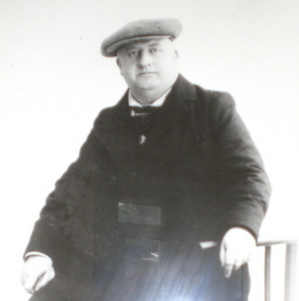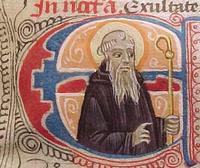Author: Paul Zalonski
Our Lady of Pompeii & Blessed Bartolo Longo
The devotion I have to praying the Rosary comes from my connection with Our Lady of Pompeii Church, East Haven, Connecticut. The Church ladies as my mother called them, instilled in me–along with the Sisters of the Holy Family of Nazareth–a deep love of the Rosary. These ladies communicated to me the experience of the Rosary being a powerful tool of prayer. Some speak of the Rosary as the divine tool that decapitates the head of evil. Our Lady of Pompeii Church remains special to me because it is my family’s parish, where my parents were married and where I was Baptized.
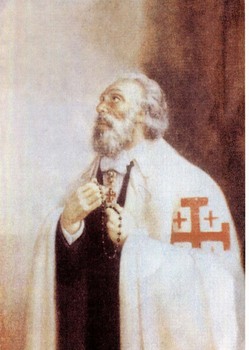 Pope John Paul II said of Longo at his beatification: “Rosary in hand, Blessed Bartolo Longo says to each of us: ‘Awaken your confidence in the Most Blessed Virgin of the Rosary. Venerable Holy Mother, in You I rest all my troubles, all my trust and all my hope!'” And of himself, Blessed Bartolo said: “I wish to die a true Dominican tertiary in the arms of the Queen of the Rosary with the assistance of my holy Father Saint Dominic and of my mother Saint Catherine of Siena.” Blessed Bartolo is a wonderful example of a saintly man who is husband and father.
Pope John Paul II said of Longo at his beatification: “Rosary in hand, Blessed Bartolo Longo says to each of us: ‘Awaken your confidence in the Most Blessed Virgin of the Rosary. Venerable Holy Mother, in You I rest all my troubles, all my trust and all my hope!'” And of himself, Blessed Bartolo said: “I wish to die a true Dominican tertiary in the arms of the Queen of the Rosary with the assistance of my holy Father Saint Dominic and of my mother Saint Catherine of Siena.” Blessed Bartolo is a wonderful example of a saintly man who is husband and father.
Today is also the feast of Blessed Bartolo Longo, the author of the following prayer, the Supplica, composed 125 years ago, is always prayed at noon on the first Sunday of October.
Petition to Our Lady of the Rosary of Pompeii
Blessed Bartolo Longo
In the name of the Father and of the Son and of the Holy Spirit. Amen.
O August Queen of Victories, O Sovereign of Heaven and Earth, at whose name the heavens rejoice and the abyss trembles, O glorious Queen of the Rosary, we your devoted children, assembled in your Temple of Pompeii, on this solemn day, pour out the affection of our heart and with filial confidence express our miseries to You.
From the Throne of clemency, where You are seated as Queen, turn, O Mary, your merciful gaze on us, on our families, on Italy, on Europe, on the world. Have compassion on the sorrows and cares which embitter our lives. See, O Mother, how many dangers of body and soul, how many calamities and afflictions press upon us.
O Mother, implore for us the mercy of your divine Son and conquer with clemency the heart of sinners. They are our brothers and your children who cause the heart of our sweet Jesus to bleed and who sadden your most sensitive Heart. Show all what you are, the Queen of Peace and of Pardon.
Hail Mary
It is true that, although we are your children, we are the first to crucify again Jesus into our heart by our sins and we pierce anew your heart.
We confess it: we are deserving of the most severe punishments but remember that, on Golgotha, You received with the divine Blood, the testament of the dying Savior, who declared You to be our Mother, the Mother of sinners.
You then, as our Mother, are our Advocate, our Hope. And we raise our suppliant hands to You with sighs crying: “Mercy!”
O good Mother, have pity on us, on our souls, on our families, on our relatives, on our friends, on our deceased, especially on our enemies, and on so many who call themselves Christian and yet offend the Heart of your loving Son. Today we implore pity for the misguided Nations, for all Europe, for all the world, so that it may return repentant to your heart. Mercy on all, O Mother of Mercy!
Hail Mary
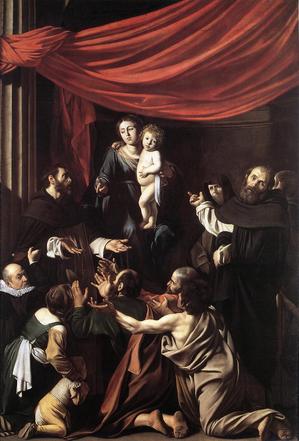 Kindly deign to hear us, O Mary! Jesus has placed in your hands all the treasures of His graces and His mercies. You are seated a crowned Queen, at the right hand of your Son, resplendent with immortal glory above all the Choirs of Angels. You extend your dominion throughout heavens and the earth and all creatures are subject to you. You are omnipotent by grace and therefore You can help us. Were You not willing to help us, since we are ungrateful children and undeserving of your protection, we would not know to whom to turn. Your Mother’s heart would not permit to see us your children, lost. The Infant whom we see on your knees and the mystical Rosary which we gaze at your hand, inspire confidence in us that we shall be heard. And we confide fully in You, we abandon ourselves as helpless children into the arms of the most tender of mothers, and on this very day, we expect from You the graces we so long for.
Kindly deign to hear us, O Mary! Jesus has placed in your hands all the treasures of His graces and His mercies. You are seated a crowned Queen, at the right hand of your Son, resplendent with immortal glory above all the Choirs of Angels. You extend your dominion throughout heavens and the earth and all creatures are subject to you. You are omnipotent by grace and therefore You can help us. Were You not willing to help us, since we are ungrateful children and undeserving of your protection, we would not know to whom to turn. Your Mother’s heart would not permit to see us your children, lost. The Infant whom we see on your knees and the mystical Rosary which we gaze at your hand, inspire confidence in us that we shall be heard. And we confide fully in You, we abandon ourselves as helpless children into the arms of the most tender of mothers, and on this very day, we expect from You the graces we so long for.
Hail Mary
One last favor we now ask You, O Queen, which You cannot refuse us on this most solemn day. Grant to all of us your steadfast love and in a special manner your maternal blessing.
We shall not leave You until You have blessed us. Bless, O Mary, at this moment, our Holy Father. To the ancient splendors of your Crown, to the triumphs of your Rosary, whence you are called the Queen of Victories, add this one also, O Mother: grant the triumph of Religion and Peace to human Society. Bless our Bishops, Priests and particularly all those who are zealous for the honor of your Sanctuary. Bless finally all those who are associated with your Temple of Pompeii and all those who cultivate and promote devotion to the Holy Rosary.
O Blessed Rosary of Mary, sweet Chain which binds us to God, Bond of love which unites us to the Angels, Tower of salvation against the assaults of hell, safe Port in our universal shipwreck, we shall never abandon You. You will be our comfort in the hour of agony: to You the last kiss of our dying life. And the last word from our lips will be your sweet name, O Queen of the Rosary of Pompeii, O dearest Mother, O Refuge of Sinners, O Sovereign Consoler of the Afflicted. Be Blessed everywhere, today and always, on earth and in Heaven. Amen.
Salve Regina
Saint Francis of Assisi
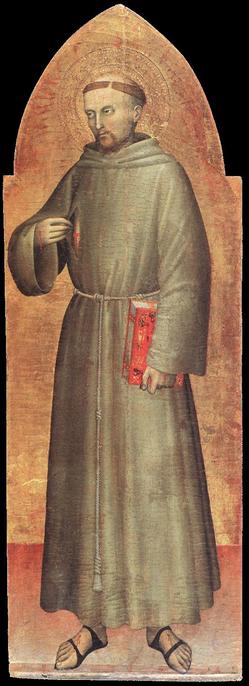 Saint Francis teach us to hold fast with the same burning love you had for Christ crucified!
Saint Francis teach us to hold fast with the same burning love you had for Christ crucified!
O God,
Who bestowed upon Saint Francis the grace of being configured to Christ in poverty and humility, grant that by walking in the same path, we may follow your Son, and be joined to you in the joy of charity. Through our Lord Jesus Christ, your Son, who lives and reigns with you in the unity of the Holy Spirit,
God, forever and ever.
To bring light to the people of this world which … and to lead them back to the pure ideals of the wisdom of the Gospels, there appeared, in the Providence of God, St. Francis of Assisi who, as Dante sang, “shone as the sun” (Paradiso, Canto XI), or as Thomas of Celano had already written of a similar figure, “he shone forth as a resplendent star on a dark night, like the morning which spreads itself over the darkness.” (Legenda I, No. 37)
…the Seraphic Father, motivated by the idea of perfect poverty which had taken complete possession of his soul, made himself so small and humble as to obey others (it would be better to say almost everyone) with the very simplicity of a child, for the reason that he who does not deny himself and give up his own will, certainly cannot be said to have renounced all things or to have become humble of heart. St. Francis by his vow of obedience consecrated gladly and submitted fully his will, the greatest gift which God has bestowed on human nature, to the will of the Vicar of Jesus Christ. (Rite Expiatis, Pope Pius XI, 30 April 1926)
Focus on the Synod on Scripture
As you know, there is a synod happening in Rome. It will be working on themese related
 to the sacred Scriptures. This synod and our study of the Bible is essential to our spiritual life and our life in the Catholic Church, so spend time with materials that will broaden your scriptural horizon. The synod and the Year of Saint Paul are apt for our times.
to the sacred Scriptures. This synod and our study of the Bible is essential to our spiritual life and our life in the Catholic Church, so spend time with materials that will broaden your scriptural horizon. The synod and the Year of Saint Paul are apt for our times.
The 29 September 2008 issue of America Magazine published worthwhile articles on the
Synod of Bishops on the Word of God. They are worth your consideration.
Abbot John B. Klassen, OSB, “Ever Ancient, Ever New”
Bishop Richard J. Sklba, “Nourished and Ruled By Sacred Scripture”
Father Richard J. Clifford, S.J., “The Original Testament”
Father John R. Donahue, S.J., “A Hymn With Many Voices”
Father Ronald D. Witherup, S.S., “From Council to Synod”
Doctor Pheme Perkins, “Sowing the Word”
AND when you’re finished with the above, read John Allen’s article here.
Blessing of Animals
For the feast of Saint Francis of Assisi the blessing of animals is observed.
 Herewith are two blessings: one for healthy animals and one for sick ones.
Herewith are two blessings: one for healthy animals and one for sick ones.
Blessing of Animals
V. Our help is the name of the Lord.
R. Who made heaven and earth.
V. The Lord be with you.
R. And with your spirit. (or use the new form)
Let us Pray.
O God, our refuge and our strength, give ear to the entreaties of Your Church, You are the Source of mercy, and grant that what we seek in faith, we may receive in fact. Through Christ our Lord. Amen.
Let us Pray.
Almighty and everlasting God, Who did assist Saint Antony [and Saint Francis of Assisi] to emerge unscathed from many temptations of this world, grant Your servant to progress in virtue by his illustrious example; and by his merits and intercession, free us from the ever-present dangers of life. Through Christ our Lord. Amen.
Let us Pray.
Let these animals receive Your blessing, + O Lord, to the benefit of their being, and by the intercession of Saint Antony [and Saint Francis], deliver them from all harm. Through Christ our Lord. Amen.
They are sprinkled with holy water.
Blessing of Sick Animals
Vested in surplice and purple stole, the priest says:
V. Our help is in the name of the Lord.
R. Who made heaven and earth.
V. Deal not with us, O Lord, according to our sins.
R. Nor take vengeance upon our transgressions.
V. You, O Lord, shall heal men and animals.
R. For You, O God, do proffer full mercy.
V. You open Your hand.
R. And fill every creature with blessing.
V. O Lord, hear my prayer.
R. And let my cry come unto You.
V. The Lord be with you.
R. And with your spirit. (or use the new form)
Let us Pray.
O God, You give consolation to mankind when afflicted, and even to mute beasts. Wherefore, we suppliantly pray – let these animals not perish, for they are indispensable to our needs. Through Christ our Lord. Amen.
Let us Pray.
Your mercy, O Lord, we humbly and perseveringly implore, that these animals afflicted with sever sickness may be cured in Your name and by the power of Your blessing +. Let any effects in them of evil spirits become extinct, lest sickness afflict them again, and You, Lord, are the guardian of their existence and the remedy to health. Through Jesus Christ, Your Son, our Lord, Who lives and reigns with You in the unity of the Holy Spirit, God, for all eternity. Amen.
Let us Pray.
Turn away every scourge from Your servants, we beseech You, Lord, and drive out from these beasts the destroying sickness. For just as You punish us when we deviate from Your paths, so reward us with Your mercy when we correct our evil ways. Through Christ our Lord. Amen.
They are sprinkled with holy water.
A modern day Michelangelo: mosaics for the 21st century
 Sacred Heart University in Fairfield, Connecticut is building a new University Chapel and has commissioned a rather unique team of artists to create original works of art for use in the sacred Liturgy.
Sacred Heart University in Fairfield, Connecticut is building a new University Chapel and has commissioned a rather unique team of artists to create original works of art for use in the sacred Liturgy.
Jesuit Father Marko I. Rupnik heads the artistic and theological team from the Aletti Center in Rome, Italy. He is a world-renowned artist whose works grace Pope John Paul II’s Redemptoris Mater chapel at the Vatican and at the Basilica of Notre Dame du Rosaire, at Lourdes in France (a recent installation). His first work in the USA was commissioned by the Knights of Columbus Supreme Office in New Haven, Connecticut in 2005.
 This art doesn’t just decorate a space. It is liturgical art that is integrated into a particular space for the celebration of the sacred Liturgy. In relation to the sacred Liturgy, the liturgical art together with word and ritual gesture articulate the Church’s interior life of holiness. By this, a church is an ecclesial edifice that not only allows a person to encounter the dynamic work of the Blessed Trinity, but it allows you to pray, think and relate at a real human level about the Divine Presence. The experience of good liturgical art, like the work of Father Rupnik, is not a mere static experience; it is an experience that vivifies our humanity. The artwork Rupnik has created in the Fairfield and in New Haven like that of the works in Rome and other places, is an expression of a dynamic spiritual quest of the divine and human, oriented in Church with a totality and energy of the living Trinitarian love communicated in Christ.
This art doesn’t just decorate a space. It is liturgical art that is integrated into a particular space for the celebration of the sacred Liturgy. In relation to the sacred Liturgy, the liturgical art together with word and ritual gesture articulate the Church’s interior life of holiness. By this, a church is an ecclesial edifice that not only allows a person to encounter the dynamic work of the Blessed Trinity, but it allows you to pray, think and relate at a real human level about the Divine Presence. The experience of good liturgical art, like the work of Father Rupnik, is not a mere static experience; it is an experience that vivifies our humanity. The artwork Rupnik has created in the Fairfield and in New Haven like that of the works in Rome and other places, is an expression of a dynamic spiritual quest of the divine and human, oriented in Church with a totality and energy of the living Trinitarian love communicated in Christ.
The Aletti Center is animated by a team of Jesuits and religious. The members of the team
 are specialists in Eastern theology and in related arts brought together to promote and to develop activities for theological-cultural reflection. A well-known member of the Aletti team is Jesuit Cardinal
are specialists in Eastern theology and in related arts brought together to promote and to develop activities for theological-cultural reflection. A well-known member of the Aletti team is Jesuit Cardinal
Tomáš Špidlík from the Czech Republic but who has spent more than 50 years teaching in Rome (pictured in the center). Founded in 1991, the Aletti Center is part of the Pontifical Oriental Institute which specializes in the study and research of the theology of the Eastern Churches.
Blessed Columba Marmion
O God, almighty Father, who called the blessed abbot Columba to the monastic way of life and opened to him the secrets of the mysteries of Christ, mercifully grant that, strengthened by his intercession, in the spirit of your adoption as sons, we may become a dwelling place worthy of your Wisdom. Through the same Lord Jesus Christ, your Son, who lives and reigns with you, in the unity of the same Holy Spirit, God, forever and ever.
Deeply steeped in the Scriptures and the tradition of the Church, through the Liturgy, the Benedictine charism and St. Thomas Aquinas, Dom Marmion emphasizes the role of Jesus Christ:
…Holiness then, is a mystery of Divine life communicated and received: communicated in God from the Father to the Son by an ineffable generation; [Isaiah 52:8] communicated by the Son to humanity, which He personally unites to Himself in the Incarnation; then restored to souls by this humanity, and received by each of them in the measure of their special predestination: according to the measure of the giving of Christ [Ephesians 4:7] so that Christ is truly the life of the soul because He is the source and giver of life…
In his teaching, Dom Marmion emphasizes ‘Redemption from’, oriented toward ‘Redemption for’:
… According to our manner of speaking, holiness seems to us that it is composed of a double element: first, infinite distance from all that is imperfection, from all that is created from all that is not God Himself. This is only a ‘negative’ aspect. There is another element which consists in this: that God adheres by an innumerable and always present act of His will, to the Infinite Good, which is Himself, in order to conform Himself entirely to all that this Infinite Good is. God knows Himself perfectly. His All-Wisdom shows Him His own essence as supreme norm of all activity.
(Fr. Joseph Henchey, CSS, “A Reflection on the Hope of Dom Columba Marmion”)
The author of this blog has more on Blessed Columba, plus you may want to survey this site.
Benedict speaks to Abbots and Abbesses
Address of His Holiness Benedict XVI
to the Participants
In the International Benedictine Abbots’ Conference
Papal Summer Residence, Castel Gandolfo
Saturday, 20 September 2008
Dear Father Abbots,
Dear Sister Abbesses,
I receive you with great joy on the occasion of the International Congress for which all the Abbots of your Confederation and the Superiors of independent Priories meet in Rome every four years to reflect on and discuss ways to embody the Benedictine charism in the present social and cultural context and respond to its ever new challenges to Gospel witness. I first greet the Abbot Primate, Dom Notker Wolf and thank him for what he has said on behalf of all. I likewise greet the group of Abbesses who have come representing the Communio Internationalis Benedictinarum, as well as the Orthodox Representatives.
In a secularized world and an epoch marked by a disturbing culture of emptiness and meaninglessness, you are called to proclaim the primacy of God without compromise and to advance proposals for possible new forms of evangelization. The commitment to personal and communitarian sanctification that you pursue and the liturgical prayer that you encourage equip you for a particularly effective witness. In your monasteries, you are the first to renew and to deepen daily the encounter with the Person of Christ, whom you always have with you as guest, companion and friend. For this reason your convents are places where in our time too men and women hasten to seek God and learn to recognize the signs of Christ’s presence, charity and mercy. With humble trust, you never tire of sharing with those who turn to your spiritual care the riches of the Gospel message, which are summed up in the proclamation of the love of the merciful Father who is ready to embrace every person in Christ. Thus you will continue to make your precious contribution to the vitality and sanctification of the People of God, in accordance with the special charism of Benedict of Norcia.
Dear Abbots and Abbesses, you are custodians of the patrimony of a spirituality anchored radically to the Gospel, “per ducatum evangelii pergamus itinera eius”, as St Benedict says in the Prologue to the Rule. It is precisely this that engages you to communicate and give to others the fruits of your inner experience. I know and deeply appreciate the generous and competent cultural and formative work carried out by so many of your monasteries, especially for the young generations, creating an atmosphere of brotherly acceptance that favours a unique experience of Church. In fact, it is of primary importance to prepare young people to face their future and measure up to the many demands of society, having as a constant reference the Gospel message, which is ever timely, inexhaustible and life-giving. Devote yourselves, therefore, with fresh apostolic zeal to youth who are the future of the Church and of humanity. Indeed to build a “new” Europe it is necessary to start with the new generations, offering them the possibility of coming into close contact with the spiritual treasure of the liturgy, of meditation and of lectio divina.
This pastoral and formative action is in fact more necessary than ever for the whole human family. In many parts of the world, especially Asia and Africa, there is a pressing need for vibrant places of encounter with the Lord, in which, through prayer and contemplation, the individual may recover peace with himself and peace with others. Therefore, do not fail to meet with an open heart the expectations of all those, outside of Europe too, who express a keen desire for your presence and your apostolate in order to draw from the riches of Benedictine spirituality. Let yourselves be guided by the deep desire to serve every person charitably, irrespective of their race or religion. With prophetic freedom and wise discernment, may your presence be meaningful wherever Providence calls you to settle, always distinguishing yourselves for the harmonious balance of prayer and work that is a feature of your way of life.
And what should be said of the famous Benedictine hospitality? It is a special vocation of yours, an experience that is fully spiritual, human and cultural. May balance exist here too: may the heart of the community be wide open but in proportion to the times and forms of hospitality. You will thus give the men and women of our day a possibility of deepening the meaning of life within the infinite horizon of Christian hope, cultivating inner silence in communion with the Word of salvation. A community capable of authentic fraternal life, fervent in liturgical prayer, in study, in work, in cordial availability to your neighbour who is thirsting for God, is the best impetus for inspiring in hearts, especially those of young men, the vocation to monastic life and in general a fruitful journey of faith.
I would like to address a special word to the representatives of the Benedictine nuns and sisters. Dear sisters, like other religious families you too are suffering from the lack of new religious vocations. Do not let yourselves be disheartened but face these painful situations of crisis calmly, aware that it is not so much success that is asked of each one as faithful commitment.
What should be absolutely avoided is a weakening of spiritual attachment to the Lord and to one’s vocation and mission. On the contrary, by persevering in it faithfully we profess most effectively, also to the world, our firm trust in the Lord of history, in whose hands are all the times and destinies of individuals, institutions and peoples; and let us also entrust ourselves to him with regard to the actuation in history of his gifts. Make your own the spiritual attitude of the Virgin Mary, happy to be the “ancilla Domini“, totally available to do the will of the heavenly Father.
Dear monks, nuns and sisters, thank you for this pleasant visit! I accompany you with my prayers so that at your meetings during these days of your Congress you may discern the most appropriate ways to witness visibly and clearly in your life-style, work and prayer, to your commitment to a radical imitation of the Lord. May Mary Most Holy sustain your every project of good, help you above all to keep God before your eyes and accompany you maternally on your journey. As I invoke an abundance of heavenly gifts to support all of your generous resolutions, I warmly impart a special Apostolic Blessing to you and to the entire Benedictine Family.
© Copyright 2008 – Libreria Editrice Vaticana
Catholic Underground NYC: October 11
The Catholic Underground NYC is meeting on Saturday, October 11th. You know the plan: people gather at Our Lady of Good Counsel Church (230 East 90th Street, NYC) at 7:30 pm for Vespers and adoration of the Blessed Sacrament. Confessions will be heard. From 8:30-10:30 the crowd moves to the church hall for a musical performance. At this Underground NYC’s Messengers of Christ (M.O.C.) will be performing.
Parking: Parking garage across the street from the Church available, $10 a night with Catholic Underground stamp.
Contact:
e-mail: catholicunderground@gmail.com
Synod on the Word of God: Are YOU praying for it? What are you doing to know the Scriptures better?
Are you praying for the Holy Spirit’s
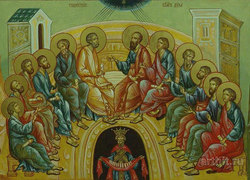 intercession? Will you following the Pope’s meeting on the Bible? Prayer to the Spirit is always key to the work of our Church: the scholars, pastors, students and faithful rely on our intercession on their behalf.
intercession? Will you following the Pope’s meeting on the Bible? Prayer to the Spirit is always key to the work of our Church: the scholars, pastors, students and faithful rely on our intercession on their behalf.
A meeting was called by Pope Benedict XVI to study the role of the Bible in our lives as Catholics. The meeting (October 5-26) is technically called by the Church a “Synod of Bishops” which is a gathering of invited bishops, experts and others to offer input on a particular subject to the Holy Father who will later write a paper as a follow up setting a direction in which he thinks the entire Church should go. It was Pope Paul’s intention that “Synod [is] in response to the desire of the Fathers of the Second Vatican Council to keep alive the spirit of collegiality engendered by the conciliar experience.” The Holy See’s own understanding of the role of a synod is:
A Synod is a religious meeting or assembly at which bishops, gathered around and with the Holy Father, have opportunity to interact with each other and to share information and experiences, in the common pursuit of pastoral solutions which have a universal validity and application. The Synod, generally speaking, can be defined as an assembly of bishops representing the Catholic episcopate, having the task of helping the Pope in the governing of the universal Church by rendering their counsel. Pope John Paul II has referred to the Synod as “a particularly fruitful expression and instrument of the collegiality of bishops.
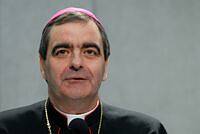 The commission which coordinates the Synod of Bishops is headed by Croatian Archbishop Nikola Eterovic. In collaboration with the cardinals, bishops and experts, and of course with the Holy Father himself, a theme and an agenda is set for the Synod participants to work on. Therefore, the coming Synod is thus…
The commission which coordinates the Synod of Bishops is headed by Croatian Archbishop Nikola Eterovic. In collaboration with the cardinals, bishops and experts, and of course with the Holy Father himself, a theme and an agenda is set for the Synod participants to work on. Therefore, the coming Synod is thus…
The topic of the XII Ordinary General Assembly of the Synod of Bishops, “The Word of God in the Life and Mission of the Church” can be understood in its christological sense, namely, Jesus Christ in the Life and Mission of the Church. This christological approach, linked by necessity to the pnuematological one, leads to the discovery of the Trinitarian dimension of revelation. Looking at the subject in this way ensures the unity of revelation. All the words and deeds, recorded in Sacred
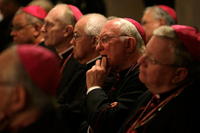 Scripture by the inspired authors and faithfully guarded in Tradition, come together in the Person of the Lord Jesus, the Word of God. This is seen in the New Testament, which narrates and proclaims the mystery of his death, resurrection and presence in the midst of the Church, the community of his disciples called to celebrate these sacred mysteries. Because of the grace which leads to the destruction of sin (cf. Romans 6:6), his followers seek to conform themselves to their Master so that each might live Christ (cf. Galatians 2:20). Such is also the case in the Old Testament which, according to Jesus’ own words, refers to himself (cf. John 5:39; Luke 24:27). Reading the Scriptures from a christological and pneumatological perspective leads from the letter to the spirit and from the words to the Word of God. Indeed, the words often conceal their true meaning, especially when considered from the literary and cultural point of view of the inspired authors and their way of understanding the world and its laws. Doing so leads to rediscovering the unity the Word of God in the many words of Scripture. After this necessary and ardent process, the Word of God shines with a surprising splendour, more than making up for the labour expended.
Scripture by the inspired authors and faithfully guarded in Tradition, come together in the Person of the Lord Jesus, the Word of God. This is seen in the New Testament, which narrates and proclaims the mystery of his death, resurrection and presence in the midst of the Church, the community of his disciples called to celebrate these sacred mysteries. Because of the grace which leads to the destruction of sin (cf. Romans 6:6), his followers seek to conform themselves to their Master so that each might live Christ (cf. Galatians 2:20). Such is also the case in the Old Testament which, according to Jesus’ own words, refers to himself (cf. John 5:39; Luke 24:27). Reading the Scriptures from a christological and pneumatological perspective leads from the letter to the spirit and from the words to the Word of God. Indeed, the words often conceal their true meaning, especially when considered from the literary and cultural point of view of the inspired authors and their way of understanding the world and its laws. Doing so leads to rediscovering the unity the Word of God in the many words of Scripture. After this necessary and ardent process, the Word of God shines with a surprising splendour, more than making up for the labour expended.
Pope Benedict XVI’s general prayer intention for October is: “That the Synod of Bishops may help the pastors and theologians, the catechists and promoters who are engaged in the service of the Word of God to courageously transmit the truth of faith in communion with the entire Church.”
So, let’s remember the Synod members in prayer. Perhaps we should offer a rosary and fast for the Pope’s intention.

